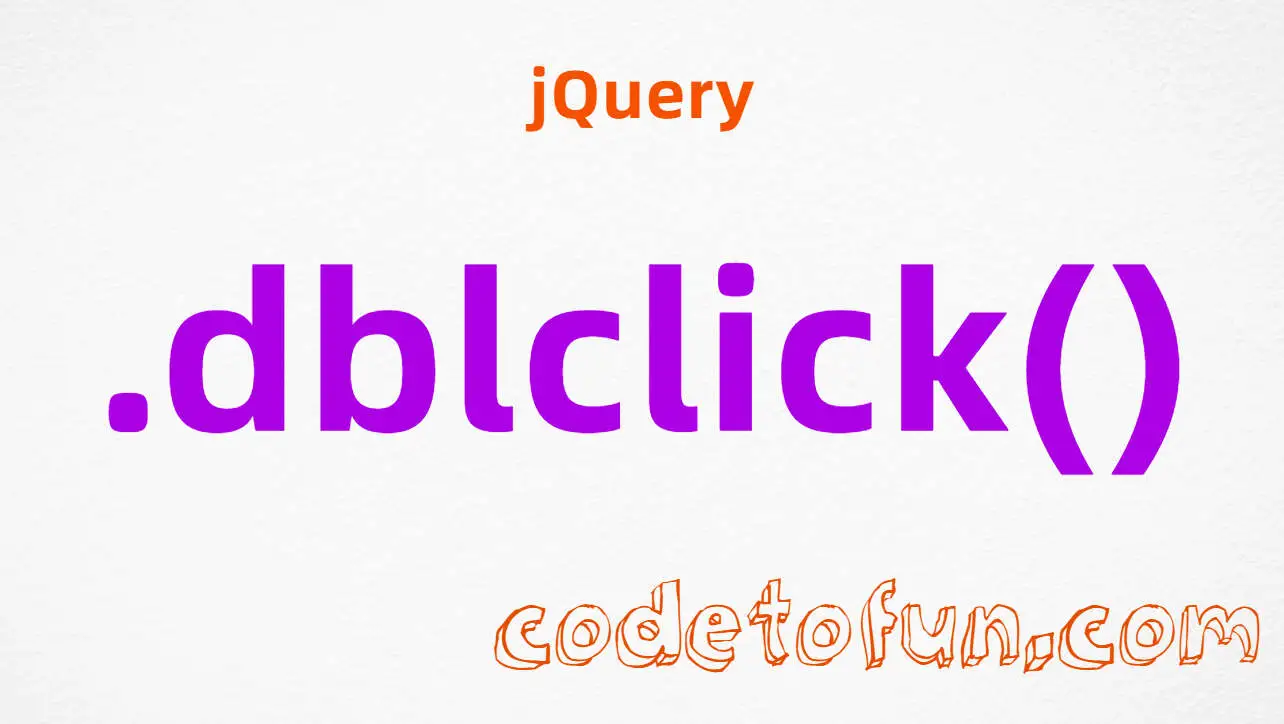
jQuery Selectors
jQuery Next Adjacent (“prev + next”) Selector

Photo Credit to CodeToFun
🙋 Introduction
In jQuery, the Next Adjacent Selector, also known as prev + next, is a powerful tool that allows you to target an element that is immediately preceded by another specific element. This selector provides a convenient way to select elements based on their relationships within the DOM (Document Object Model). Understanding and mastering the Next Adjacent Selector can greatly enhance your ability to manipulate and traverse the DOM structure.
In this guide, we'll explore the usage of the jQuery Next Adjacent Selector with practical examples to help you grasp its potential.
🧠 Understanding Next Adjacent (“prev + next”) Selector
The Next Adjacent Selector in jQuery targets an element that is immediately preceded by another element. It selects the next sibling element that comes immediately after the specified element in the DOM hierarchy.
💡 Syntax
The syntax for the Next Adjacent ( selector is straightforward:prev + next)
prev + next📝 Example
Selecting the Next Adjacent Element:
Suppose you have a list of items and you want to style the element immediately following the one with a specific class. You can achieve this using the Next Adjacent Selector as follows:
index.htmlCopied<ul> <li class="item">Item 1</li> <li class="item highlight">Item 2</li> <li class="item">Item 3</li> </ul>example.jsCopied$(".highlight + .item").css("color", "red");This will set the text color of the element immediately following the one with the class highlight to red.
Applying Styles to Next Adjacent Elements Dynamically:
You can use the Next Adjacent Selector to apply styles dynamically to elements based on their relationship in the DOM. For instance, let's change the background color of the next adjacent element when a button is clicked:
index.htmlCopied<div class="container"> <button id="changeColor">Change Color</button> <div class="box">Box 1</div> <div class="box">Box 2</div> <div class="box">Box 3</div> </div>example.jsCopied$("#changeColor").click(function() { $(".box + .box").css("background-color", "lightblue"); });This will set the background color of the next adjacent .box element to light blue when the button with the ID changeColor is clicked.
Enhancing Navigation with Next Adjacent Selector:
You can use the Next Adjacent Selector to enhance navigation within your web page. For example, if you have a form with input fields and you want to automatically focus on the next input field when the current one is filled, you can achieve this with jQuery:
index.htmlCopied<input type="text" id="input1"> <input type="text" id="input2"> <input type="text" id="input3">example.jsCopied$("input").keyup(function() { if($(this).val().length >= 1) { $(this).next("input").focus(); } });This script will automatically focus on the next input field when the current one is filled.
🎉 Conclusion
The jQuery Next Adjacent Selector provides a convenient way to target elements based on their immediate relationships within the DOM structure. Whether you need to select elements for styling, apply dynamic changes, or enhance navigation, this selector offers a powerful solution.
By mastering its usage, you can efficiently manipulate the DOM and create more interactive and user-friendly web pages.
👨💻 Join our Community:
Author

For over eight years, I worked as a full-stack web developer. Now, I have chosen my profession as a full-time blogger at codetofun.com.
Buy me a coffee to make codetofun.com free for everyone.
Buy me a Coffee











